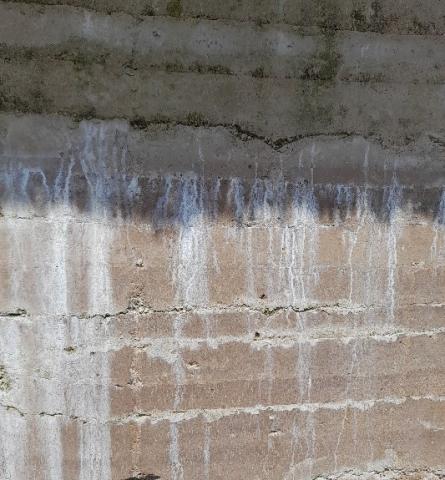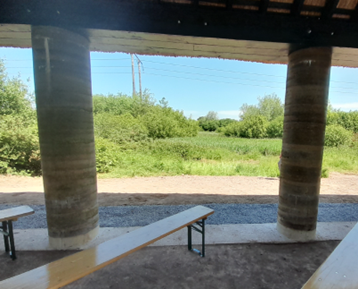
The Kinship Ecolab, a community space for creativity and innovation built with sufficiency in mind.

About this good practice
Construction waste is one of the heaviest waste. On demolition, these items may be toxic and require specialized disposal. The Kinship Ecolab is built using sustainably made, recyclable materials. The project was influenced by the climate crisis and creating a community to foster creativity.
The building on a former landfill site, was built to enhance the connection between the natural environment and the use of natural materials for building. Everything used in the construction comes from the environment and can be returned to the environment without impacting the surrounding ecosystem.
The building is fully recyclable and employs a low-tech construction method called ramming, using locally sourced clay soil and a small percentage of concrete to form walls supported by wooden beams until dry. The clay is applied in layers and rammed by hand to ensure a compacted structure. Sustainably grown timber is used to support the roof. The roof is thatched using bog reeds highlighting the connection to Carroll’s Bog located nearby. The space is used for community organisations, workshops, events and meetings that support low-tech, environmentally conscious actions. The space has no power, so relies on low tech methods to host events.
Cork City Council are partners in collaboration with Lennon Taylor artists on the Kinship Project. Stakeholders of the project include communities, Fuínneamh Workshop Architects, Civil and Structural Engineering Advisors Ltd Ireland, MTU, UCC, clubs.
Expert opinion
Resources needed
The running of the Ecolab is carried out by the Kinship Project coordinators with support from Cork City Council. Constructing the Ecolab involved architect, engineer, carpenter for form work on structure, graded earth, volunteers for earth ramming, employing a thatcher to complete the roof.
Evidence of success
The Ecolab highlights the connection between the natural environment, building materials and returning the materials to the land without polluting impacts and reducing waste materials. The Ecolab construction was delayed by difficulties securing a master-thatcher for the work. The structure is a creative example of an innovative frugally constructed building for use by clubs, community organizations and meetings. Additionally, the ongoing running of the space is done using low-tech methods.
Potential for learning or transfer
With the increased need for housing across Europe, the practice of sustainable, toxin free building methods should and must be replicated. The Ecolab is an example of sustainable low-tech construction with design for deconstruction at the fore.
Creating a building using locally sourced materials like soil and timber cuts transport costs and emissions, creating jobs, developing business opportunities and fostering creativity.
The reeds in Ireland unfortunately were not suitable for the thatching due to the increased nitrogen content in our rivers. The reeds had to be sourced from mainland Europe, However the recyclability of the reeds is still feasible to reduce waste in landfill or pollution to the environment.
Tramore Valley Park was a former landfill that has been remediated and turned into a biodiverse park for sporting activities, exercising and meeting friends. The Ecolab offers a meeting place with the added value of a shelter for workshops, events and community organizations.




